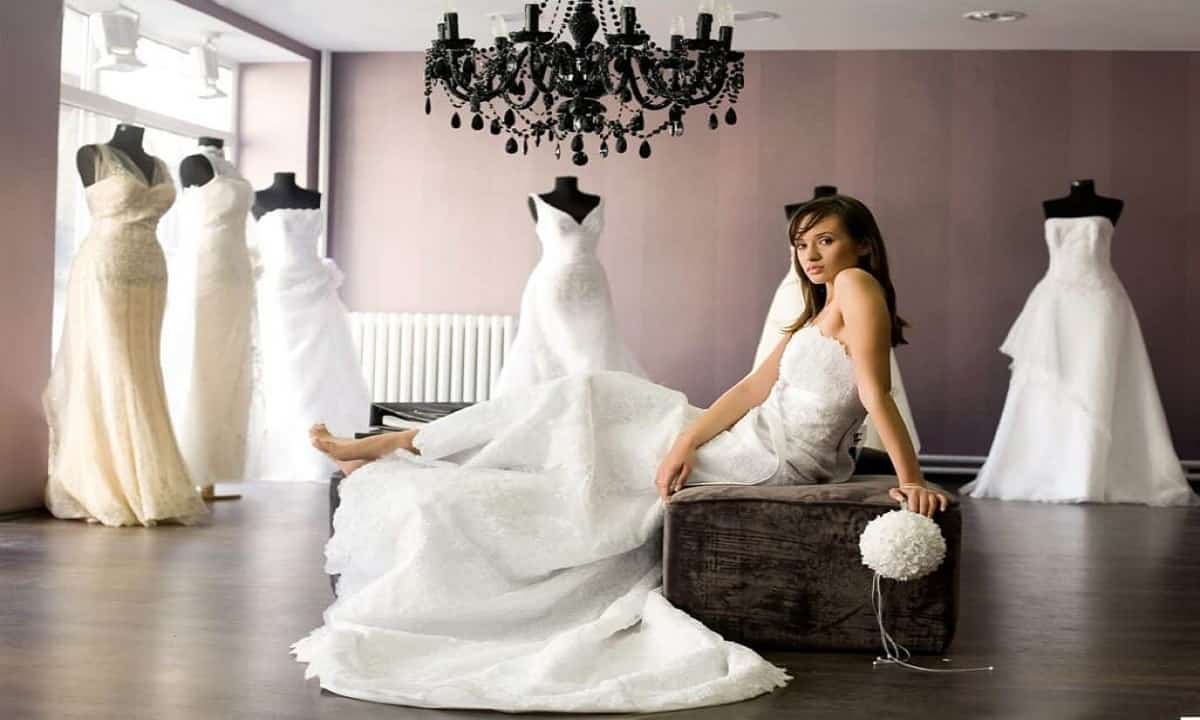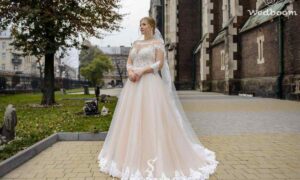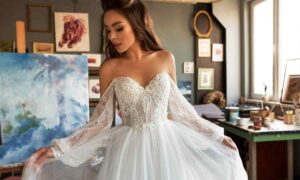How to become wedding dress designer
key takeaways:
- Formal fashion design training through degree programs or intensive courses.
- Hone technical skills like sketching, draping, sewing, and patternmaking.
- Develop business acumen for marketing, branding, and studio management
- Seek internships with established designers to gain industry insights.
- Build a portfolio showcasing your unique style and skills.
- Network with professionals and potential clients to build your presence.
Introduction:
Becoming a wedding dress designer is an exciting and fulfilling career path for those looking to express their creativity through elegant bridal gowns. In this comprehensive guide, we will outline the key steps needed to launch a career as a wedding dress designer, from education to building a client base.
Becoming a Wedding Dress Designer: The Journey Unveiled
1. Education and Training
a. Formal Education
While not mandatory, obtaining a formal education in fashion design can provide a solid foundation for your career. Look for reputable fashion design schools that offer comprehensive programs.
b. Self-Study
If formal education is not an option, consider self-study. Utilize online resources, books, and tutorials to enhance your understanding of fashion design, sewing techniques, and patternmaking skills.
2. Developing Essential Skills
a. Technical Skills
Master the technical aspects of fashion design, including sewing, patternmaking, and draping. Online courses and workshops can be valuable resources to sharpen these skills.
b. Creativity and Passion
Nurture your creativity and passion for design. Experiment with different styles, fabrics, and embellishments to develop a unique and signature design aesthetic.
3. Gaining Practical Experience
a. Internships
Secure internships with established designers or bridal boutiques to gain hands-on experience. This practical exposure will enhance your skills and provide insights into the industry.
b. Freelance Work
Consider freelancing to build a diverse portfolio. Working on various projects allows you to showcase your versatility and attracts a broader client base.
4. Understanding the Business Side
a. Marketing and Branding
Learn about marketing strategies and branding. Define your niche and target audience to create a brand voice that resonates with potential clients.
b. Communication Skills
Develop effective communication skills. The ability to convey your design concepts and ideas clearly is crucial in the wedding dress design industry.
c. Pricing Strategy
Understand the intricacies of pricing. Establish a pricing strategy that reflects the value of your craftsmanship while remaining competitive in the market.
5. Navigating Marketing Channels
a. Website
Create a professional website showcasing your portfolio, design philosophy, and contact information. Your online presence serves as a virtual storefront for potential clients.
b. Social Media
Harness the power of social media platforms to showcase your work. Instagram, Pinterest, and Facebook can be effective tools for reaching a broader audience.
c. Networking
Attend industry events, fashion shows, and bridal fairs to network with other designers, bridal shop owners, and potential clients. Building a network can open doors to collaborative opportunities and mentorship.
6. Continued Professional Development
a. Mentors
Seek guidance from experienced designers who can provide valuable insights and advice. Mentorship can be instrumental in your growth as a wedding dress designer.
b. Industry Events
Stay updated on industry trends by attending fashion weeks, bridal expos, and other relevant events. This exposure keeps your designs fresh and aligned with current preferences.
Challenges and Rewards
Challenges
- Competition: The wedding dress design industry is competitive, requiring continuous innovation to stand out.
- Client Expectations: Meeting and exceeding client expectations can be challenging, necessitating effective communication and a keen understanding of individual preferences.
- Technical Complexity: Wedding dresses often involve intricate details, requiring advanced technical skills in construction and embellishment.
Rewards
- Emotional Fulfillment: Crafting wedding dresses provides immense satisfaction as you contribute to a bride’s special day.
- Creativity Unleashed: Designing bridal gowns allows for unparalleled creativity, enabling you to bring your artistic vision to life.
- Business Growth: Successful wedding dress designers often see their businesses flourish as satisfied clients spread the word.
Frequently asked questions:
Wedding dress designers must possess certain skills to succeed in their craft. These include having an aesthetic eye, sewing and pattern-making skills, creativity, and communication skills. You’ll need to be able to work with a team or an assistant.
Conclusion:
Becoming a wedding dress designer is a fulfilling journey that combines creativity, technical skills, and business acumen. Whether you choose a formal education path or opt for self-study, honing your skills through internships and freelancing is essential. Understanding the business side, including marketing, branding, and effective communication, is equally crucial.
As you navigate the challenges and reap the rewards of this dynamic career, remember that continuous learning and networking are key. Embrace the evolving landscape of the wedding dress design industry, and let your passion, dedication, and unique design voice guide you towards a successful and gratifying career.













